Chinese Characters / Kanji in Martial Arts
If you’ve spent any time in a martial arts studio / gym of any kind — whether doing Jiu Jitsu, Karate, Judo, Wushu, or any of the others from China or Japan (mostly) — then you’ll have seen many Chinese characters or kanji written about the place.
Known as kanji or hanzi (both of which are 漢字 or 汉字), or in English as “Chinese characters” (as Japanese and Koreans acknowledge their historical Chinese origin) or “kanji”, these are characters that are mostly common to Chinese and Japanese, with some variations.
I see Chinese Characters / kanji on wall posters and on people’s uniforms, and generally find them incredibly distracting, as I can’t help but try to figure out what they mean!
Here I’m going to generally collect the Chinese characters I see and explain them, for the other obsessively curious among you.
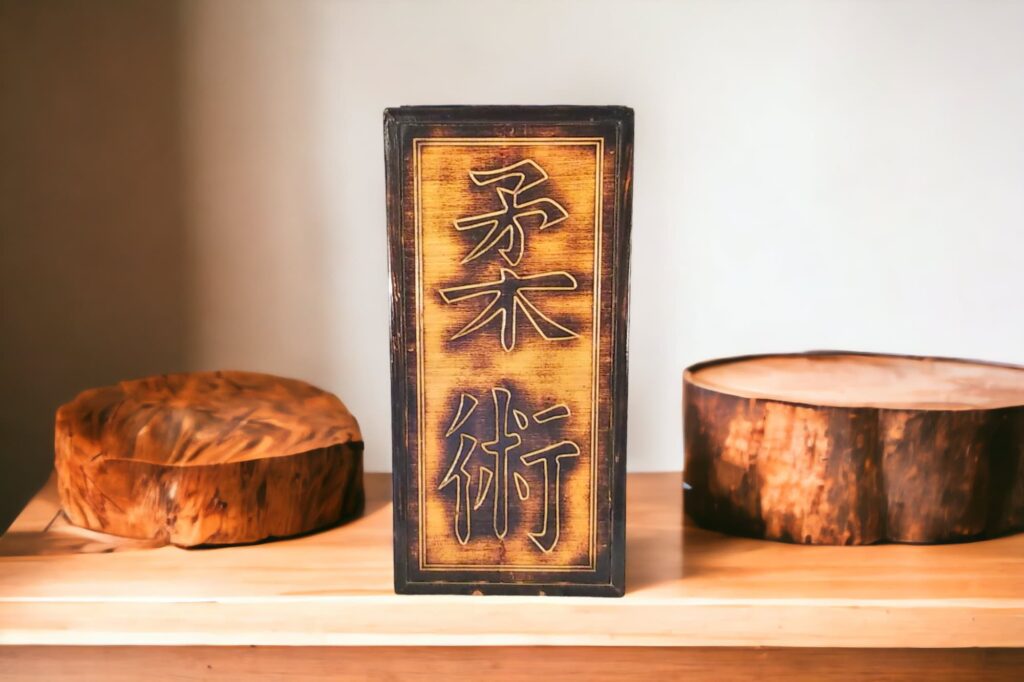
Contents
Names of Martial Arts in Chinese Characters / Kanji
Sometimes, you see big block letters of names of various martial arts in wall hangings, logos, and so on. These can be on clothing too, sometimes.
The ones I see most commonly are below. There may be others — Let me know.
| Hanzi / Kanji | Martial art | Literal meaning of characters |
|---|---|---|
| 柔道 | Judo | “Gentle path” |
| 柔術 | Jiu jitsu | “Gentle art” |
| 武術 | Wushu / Martial Arts | “War art” |
| 空手 | Karate | “Empty hand” |
| 功夫 | Kung fu | A “Skill” (Commonly used word to describe ability) |
| 散打 | Sanda | Mixed martial arts (“scattered strikes”) |
| 截拳道 | Jeet Kune Do | “Intercepting Fist Path” |
| 跆拳道 | Tae Kwon Do | Kick (archaic, Hanja) fist path (See note 1 below) |
| 武道 | Budo | Martial Way |
| 武士道 | Bushido | The Way of the Warrior (Note: Shares two characters with “Budo) |
Of course, there are other martial arts with names in Hanzi / Kanji. But they’re smaller martial arts (hey, Jeet Kune Do is getting popular lately, or is that just on Instagram?), and I see those characters less often emblazoned on uniforms or signs.
Note 1: Tae Kwon Do is Korean. Korean language has many roots in Chinese characters (called Hanja in Korean), but they’re not commonly used in Korea other than for some official purposes or symbolically (see Hanja in modern Korean). So Tae Kwon Do is usually written in modern phonetic Hangeul script as “태권도”.
Elemental / Virtue Characters
In many martial arts schools, I see wall hangings with various random characters on them. These are Chinese characters for elements.
Sometimes the selection fo characters is semi-random, and maybe a mix of traditional and simplified Chinese characters, making me wonder if people know what they mean.
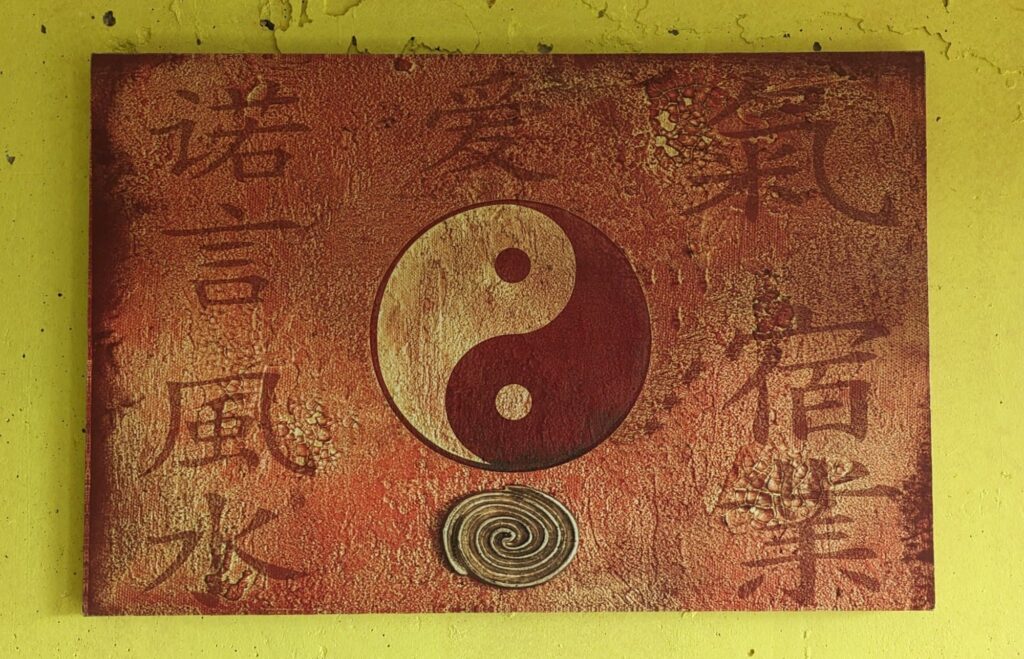
| Meaning in English | Simplified | Traditional | Pronunciation (Mandarin) | Pronunciation (Cantonese) |
|---|---|---|---|---|
| Promise/Agreement / Integrity | 诺 | 諾 | nuò | nok6 |
| Speech | 言 | 言 | yán | jin4 |
| Wind | 风 | 風 | fēng | fung1 |
| Water | 水 | 水 | shuǐ | seoi2 |
| Love | 爱 | 愛 | ài | oi3 |
| Energy/Air | 气 | 氣 | qì | hei3 |
| Accommodation / Lodging | 宿 | 宿 | sù | suk1 |
| Occupation / Work | 业 | 業 | yè | jip6 |
Various Wall Hangings
There are many wall hangings in gyms / dojos with kanji on them. They may be related to what people do there, or may not!
Often, the kanji are just for the martial art being taught, like Jiu Jitsu (e.g. the image at the top of this page)
The “Jeet Kune Do” (JKD) logo has a Yin / Yang symbol and Chinese characters around it. Even though JKD varies dramatically by the person instructing it, the wall hanging is a popular one, even in gyms that don’t instruct it, I guess because it calls back Bruce Lee.
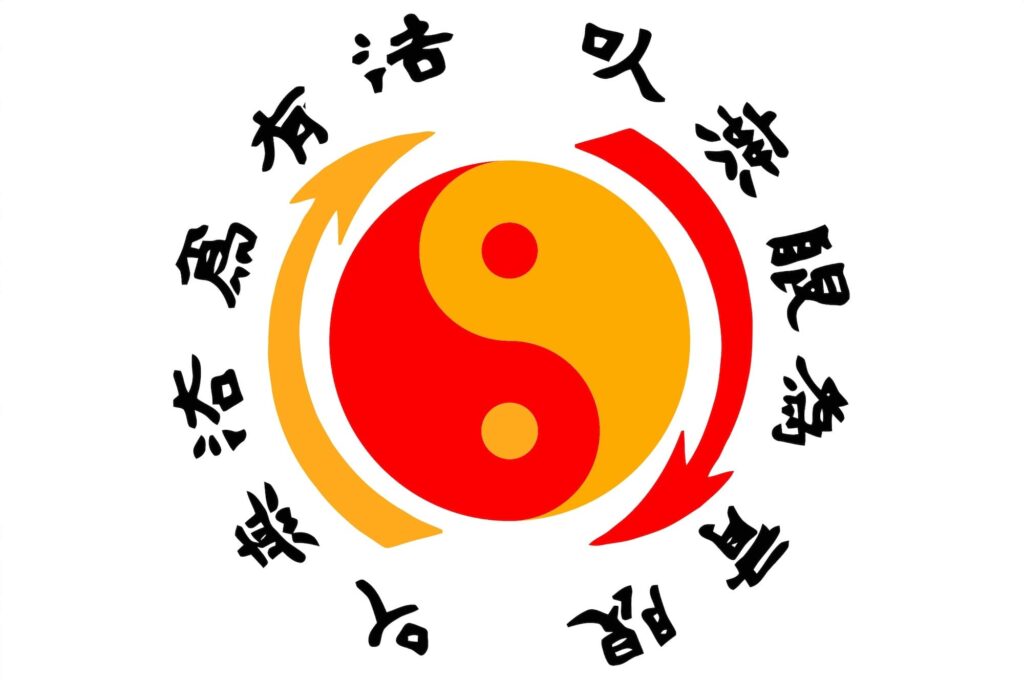
The characters in the JKD logo / wall hanging comprise a saying. The characters are 《以無限為有限, 以無法為有法》 (the character “㕥” is an old form of “以”). Together, they can be translated as “Treat the limitless as limited, the lawless as lawful.”
Characters on Uniforms
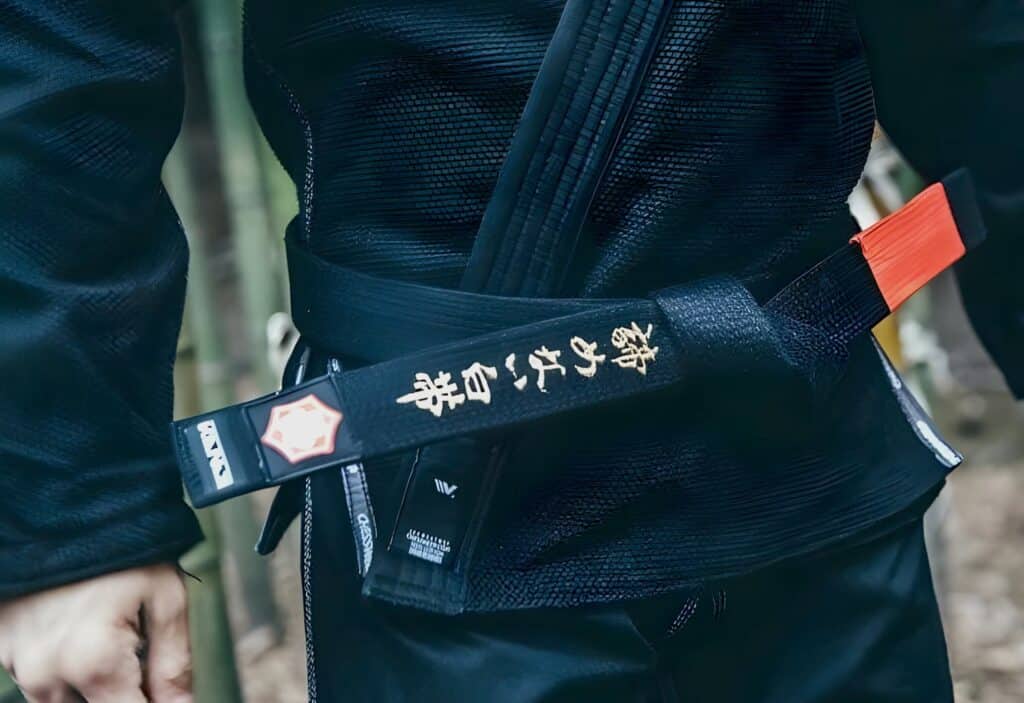
On martial arts uniforms I’ve sometimes seen Chinese characters emblazoned. It’s sometimes a bit tacky.
If you’re shopping for a uniform, avoid these, unless you know what they mean and it’s important to you! (The characters for Judo or Jiu Jitsu are a safe bet.)
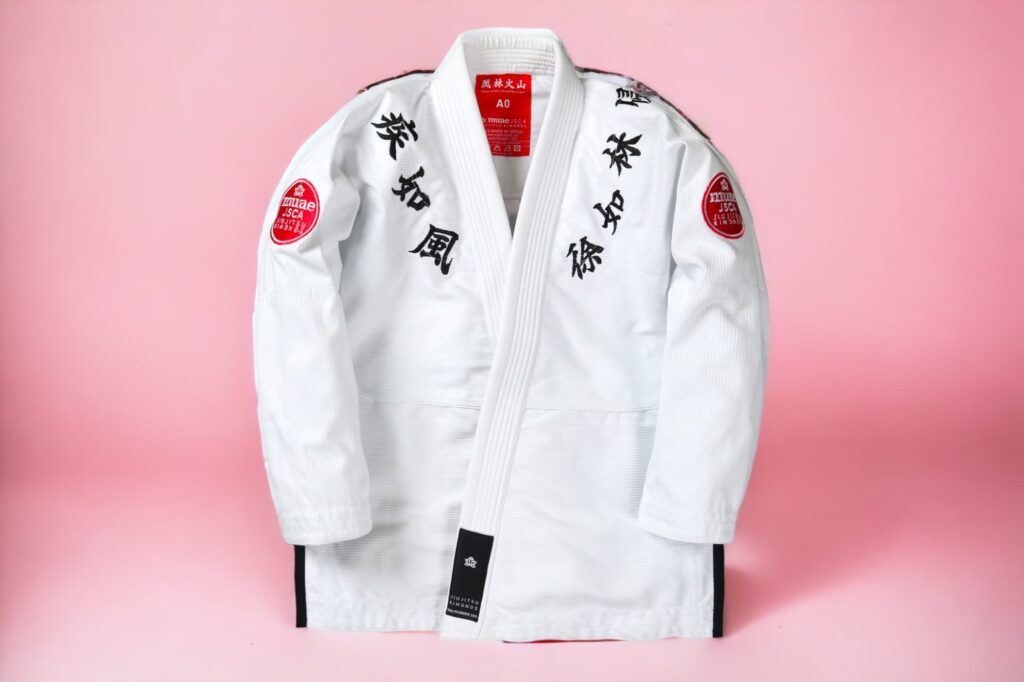
Here are the ones I’ve come across. (Got more? Comment below or send me a note).
| Chinese characters / Kanji on uniforms | Meaning |
|---|---|
| 不敗 | Invincible |
| 将軍 | Shogun (a military officer) |
| 狼 | Wolf |
| 疾如风,徐如林 | As fast as the wind, as slow as the forest (Sun Tzu quote) |
| 英雄 | Hero |
| 諦めない白帯 | “The White Belt that Never Gave Up” (Kanji + Hiragana) Often seen on Jiu Jitsu black belts. |
| 風林火山 | Wind – Forest – Fire – Mountain |
| 關羽 | Guan Yu, a famous and often-quoted general |
Sometimes, there are brand-specific characters on uniforms, too. These can also involve katakana if it’s a foreign brand name.
Other thoughts
My unsolicited thoughts: I’m not a huge fan of Chinese characters / kanji in martial arts uniforms. Often, they’re used graphically, and seem sometimes to fetishize Asian culture. Sometimes it seems a bit like wearing a T-shirt that says “I AM A LION”.
Of course, if it just says “Judo” on your Judo kimono in kanji, that’s fine. But go to Japan, and you might see very few that say that.
Coming soon: My line of uniforms with 牛肉麵 emblazoned on the back in huge characters. Stay tuned.






